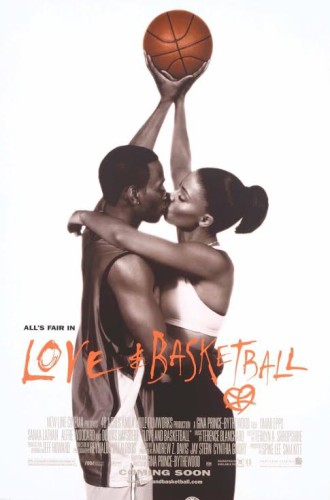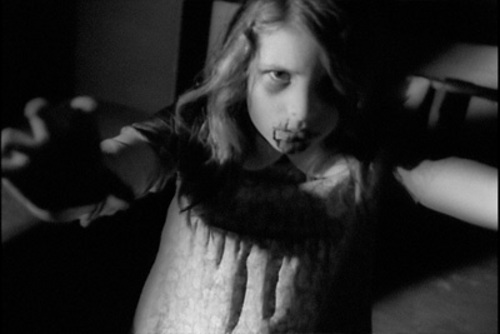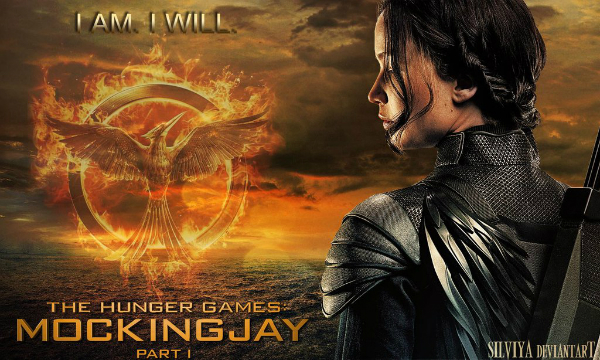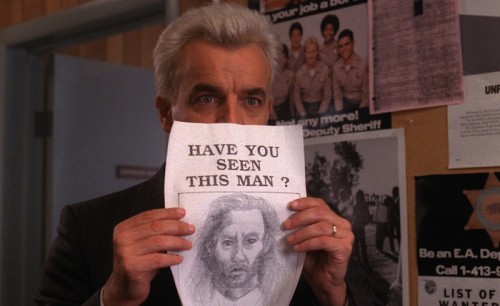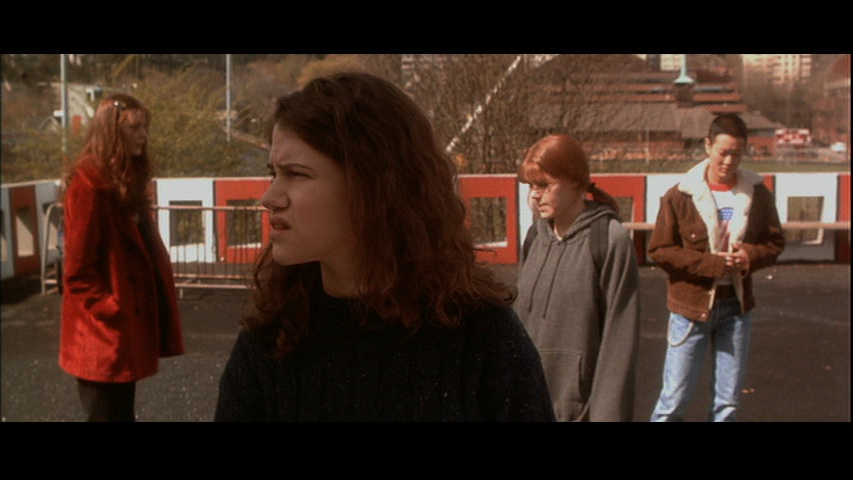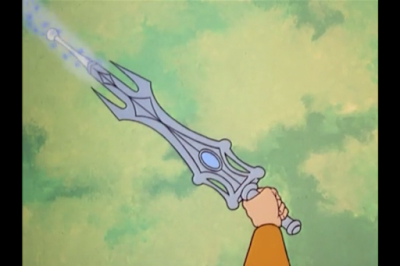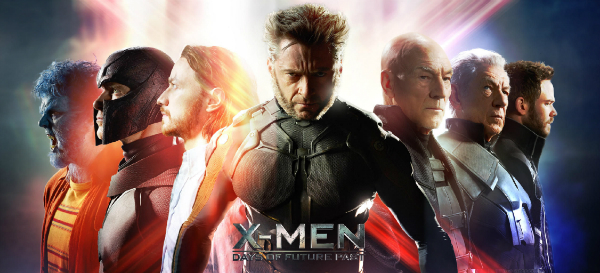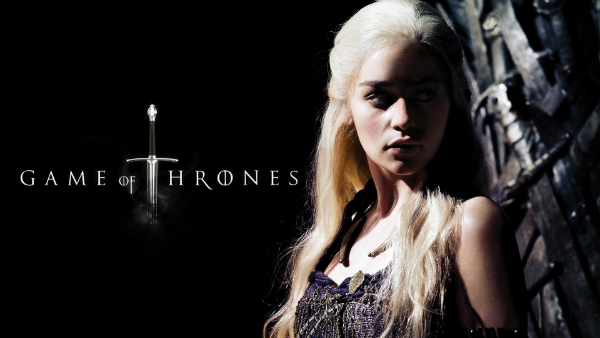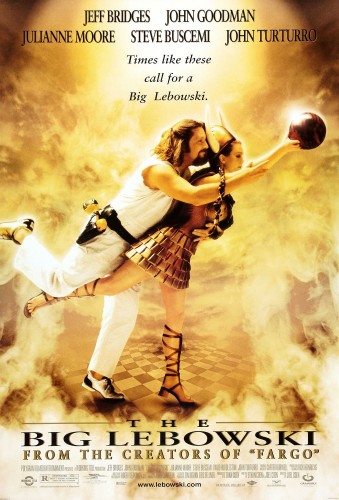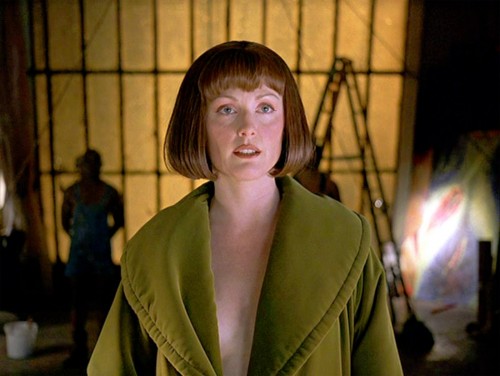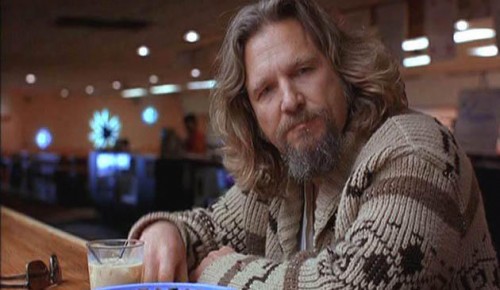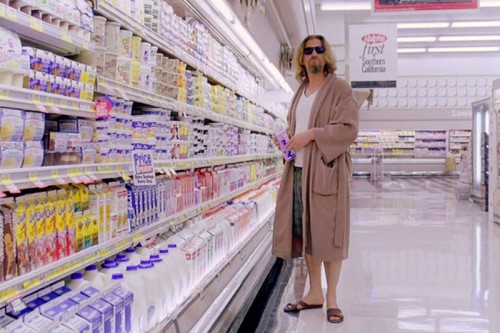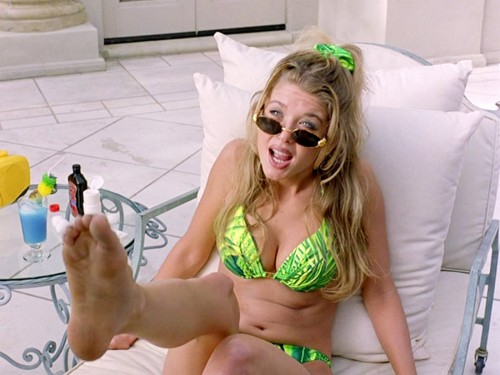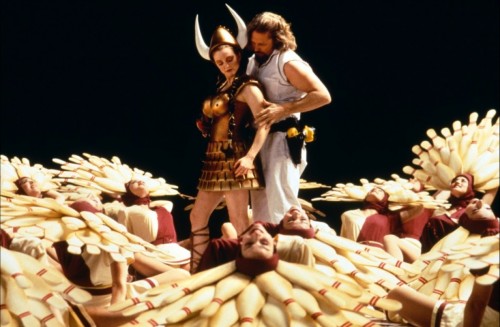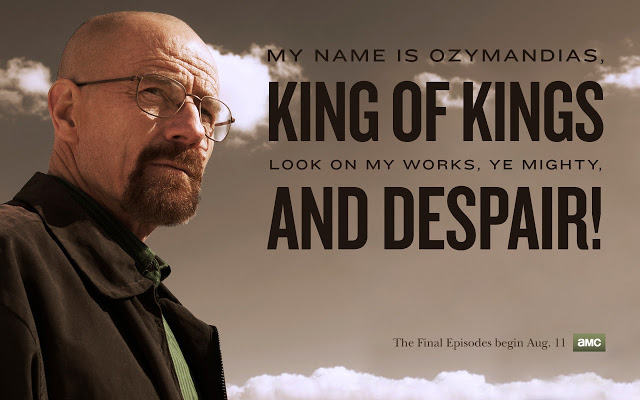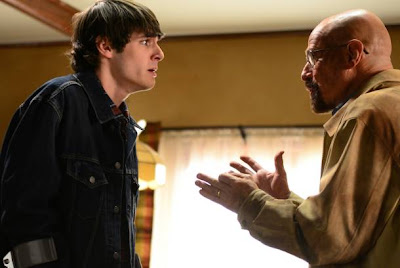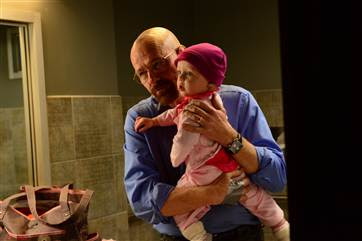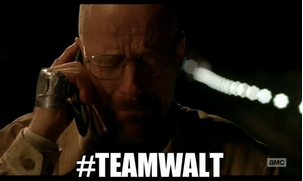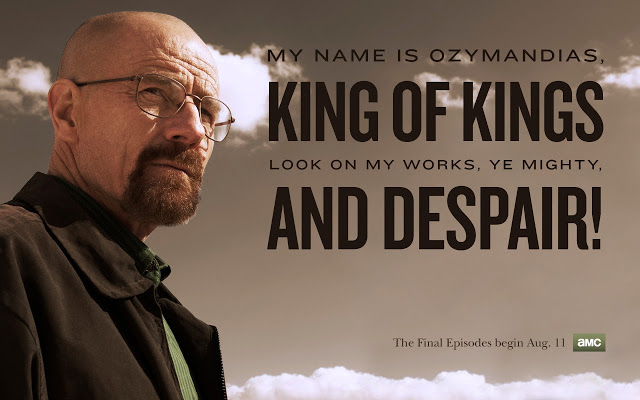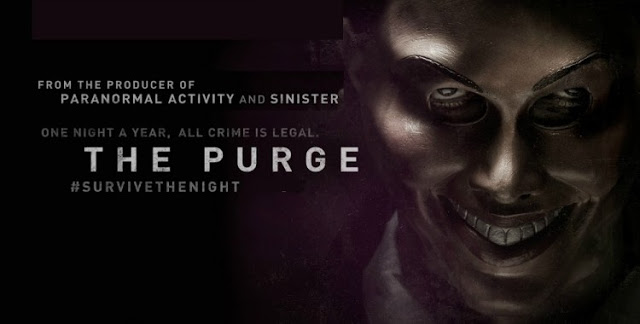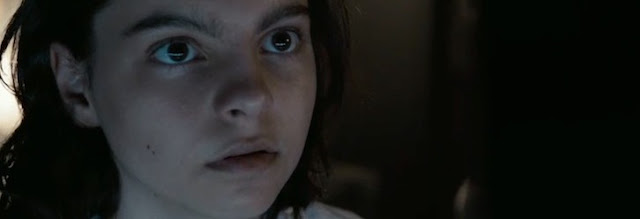This guest post by Alize Emme appears as part of our theme week on Black Families.
“I’m gonna be the first girl in the NBA,” proclaims a young Monica (Kyla Pratt). “No, I’m gonna be in the NBA,” replies a young Quincy (Glendonn Chatman). “You’re gonna be my cheerleader.” Breaking down the idea that women can’t play sports, can’t do the same things men can (like in that late 90’s commercial) is the overarching theme of Gina Prince-Bythewood’s debut feature film Love & Basketball (2000). This is the kind of movie you can watch, like I did as a teenager, and think, “what a nice love story” and it’s not really about anything more. Or, you can take a step back, and with a more seasoned eye, find a story that is rich with nuances about race, gender, and relationship roles and realize Prince-Bythewood’s artful commentary is so subtle you’ve spent the past 15 years just really enjoying this movie about a sports romance.

As a film that revolves around 12 years in the lives of two African-American basketball stars, Monica Wright (Sanaa Lathan) and Quincy McCall (Omar Epps) and their neighboring families, it’s not really about basketball. “It’s about emotion,” as Robin Roberts says during a brief cameo. Prince-Bythewood’s ability to draw commentary about the Black family experience in America is so well-integrated we, as the audience, are able to enjoy the emotional ride the characters take us on without the feeling that we’re watching a heavy-handed representation of the social issues of the time.
This isn’t a Black film either. This is the Grey’s Anatomy approach to storytelling before Grey’s Anatomy existed. You look at these characters with a colorblind eye, only seeing their passion and emotion for basketball and each other. Race is directly mentioned a grand total of one time: at the start of the film when the two family’s matriarchs first meet. Nona McCall (Debbi Morgan), mother of Quincy, has just brought over a “freshly baked” cake for her new neighbors and Camille Wright (Alfre Woodard), mother of Monica, is happy to receive her. Nona explains their neighborhood at one time was “a little more mixed,” and jokes, “that was before the Black people down the street became the Black people next door, OK!” Camille, dutifully playing the role of good little domesticated housewife, looks at Nona with utter confusion – OK what? – before an embarrassed Nona quickly switches gears and that’s that.
Economic status is also never mentioned though it’s clear that both families are affluent. Both homes are spacious and have pools; the McCalls have a basketball court in the backyard. These are not struggling families; the passion Monica and Quincy share for the game comes from the heart, not the motivation to achieve a better life.
For the majority of the film, we see this very strained relationship between Monica and Camille. Monica is a basketball-obsessed, jersey wearing, make-up free tomboy whose mother “doesn’t know where [she] came from” because she “acts different” than her dress wearing, hair-styling sister and Camille, the classic country homemaker. Monica is our feminist heroine who personifies the idea that feminist women look down on women who choose more traditional roles. Camille has a longstanding belief that her daughter is disappointed in her “prissy” lifestyle, telling Monica she’s “a female superstar athlete whose mother is nothing more than a housewife.”
Misconstrued thinking creates nearly a decade of strife for these two women until it finally arises that Monica’s only shame for her mother lies in Camille’s inability to stand up for herself at home. Indeed, we see Camille falling deep into a submissive role with her husband. Camille has spent a lifetime silencing herself so her “husband can feel like a man.” The flip side of this coin is that Camille consciously put her life dreams on hold so she could “be there” for her family and create a loving home environment. But most importantly, we learn each woman was merely seeking the approval of the other. While Monica would rather “wear a jersey than an apron,” she wanted her mother’s approval both on and off the court.
Next-door to the Wrights, across a small grassy patch of lawn, resides the McCall family. Led by patriarch Zeke McCall (Dennis Haysbert) we find here another relationship being tested. From a young age Zeke has instilled in Quincy a resilience and confidence geared toward shaping a boy into a man he can be proud of one day. Quincy treats his father’s words as gospel and views him like “he [is] god.” Prince-Bythewood introduces this theme of “My Father Was a God” early and often throughout the film. Quincy wants to be just like his father, play for the same pro ball team, and wear the same number on his jersey and around his neck. But it is tantamount to Zeke that Quincy not be like him, to focus on school and not “care about the team.”

The crumbling of this immortal facade, the fall from grace, comes from the affirmation that all the years Zeke spent being the hyper-masculine bread winner, shutting out his wife, and running to business meeting after business meeting, were all actions masking a love affair which has now evolved into a paternity suit. What really gets to Quincy is that his father, his hero, addresses the accusation of infidelity head-on with a bold face lie. A lie their relationship will never recover from. The outcome is a harsh unveiling for the young phenom; he loses trust in all around him and no longer has an accurate idea of who his father was, and by extension, who he is himself. It’s clear to us that Zeke’s steadfast molding of Quincy was deeply rooted in the mentality that Zeke “just couldn’t” be that man himself. Quincy’s big revelation, and arguably a revelation many young men face, is that he can no longer try to be his father. He “needed ball when [he] was trying to be like [his] pop,” and now that the curtain has lifted, he must redefine himself on his own terms.

The relationship between Monica and Quincy, while romantic and passionate at times, is Prince-Bythewood’s way of knocking down long enduring stereotypes about women in sports. Monica challenges everything Quincy thinks he knows about girls and life in general. He has never met a girl who not only knows how to ball, but balls better than he does. Monica won’t ride on the back of his bike and would rather have Twinkies than his apology flowers.
Monica is a ball player, and she knows how to “show emotion” on the court. But she continuously finds that those around her view her passion as aggression. If Monica were a guy, she’d “get a pat on the ass,” but because she’s “a female” she gets told to “calm down and act like a lady.” There is a huge double standard exposed here. Not only are men, on and off the court, encouraged to be aggressors, they are rewarded for it. But when a woman does the same, she’s seen as this negative force, a beast that needs to be tamed, which those around Monica try to accomplish.

Despite Quincy being a serial offender of treating women like objects, he does share this very specific friendship, turned romance, with Monica. She gets him like no one else can. But the double standards in their relationship become clear when they arrive at USC to start their basketball careers. Quincy expects Monica to handle the spoils of his success, i.e., the friendly female fans eager to cheer him on, but he will not let her off the hook when she chooses a starting spot in her game versus “being there” for him. He’s already told her it doesn’t matter if she’s “not known as the first girl in the NBA,” she’ll “get more play” being “Quincy McCall’s girl anyway,” so it’s not surprising when he further diminishes her dreams by forcing her to make this decision.
Monica has spent her freshman year struggling on the court, she hasn’t had the “red carpet” treatment like Quincy, and when an opportunity finally does arise, her boyfriend guilt trips her. The idea that women must make this sacrifice between career and relationship is so antiquated but still so accurate. In a great twist of irony, Quincy, who has spent his childhood hearing Mom complain about how Dad doesn’t make time for her and always puts basketball first, accuses Monica of the same behavior and uses that as the catalyst in his hasty decision to break-up with her. Equally interesting, Monica at this point has fallen into a more submissive role in their relationship and blames herself for its demise, pleading, “Whatever I did, we can fix this.”

As someone who grew up going to sports camps, I heard girls comment daily that they wanted to play in the NBA. So, it was completely lost on me that Monica’s constant repetition of “I’m gonna be the first girl in the NBA,” was because there was no WNBA at the time. There is this prevailing idea throughout the film that these female players are good enough to be playing with their male counterparts, but instead are relegated overseas where, as Monica finds, it’s alienating, uninspiring, and also, unfair.
At the end of the film, Prince-Bythewood has shown us the struggles a Black woman faces when entering a highly competitive arena, the breakdown of a Black father/son relationship, a Black mother who has finally given herself a voice, and a Black relationship that through time and maturity is able to advance into its own sort of “Destiny,” all while never feeling like these are Black issues. But mostly she has taught us that women can do anything men can do. This could be any woman’s triumphant story. The film’s final scene shows Monica as the starting guard in the newly formed WNBA while Quincy and their young daughter clap for her on the sidelines, begging the question: Who’s your cheerleader now?
Alize Emme is a writer and filmmaker living in Los Angeles. She holds a B.A. in Film & Television from NYU and tweets at @alizeemme.
